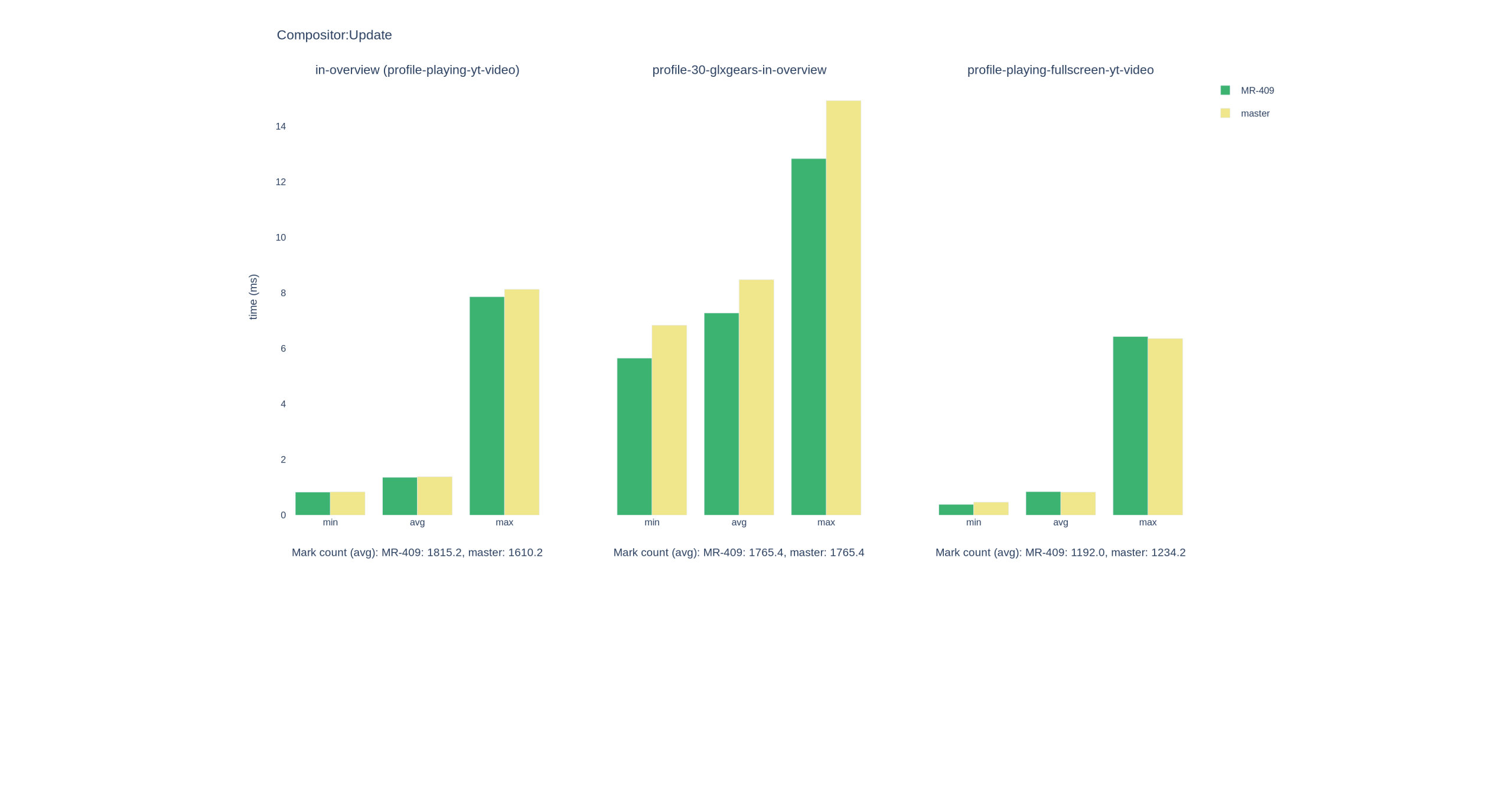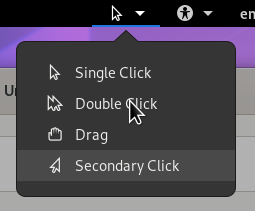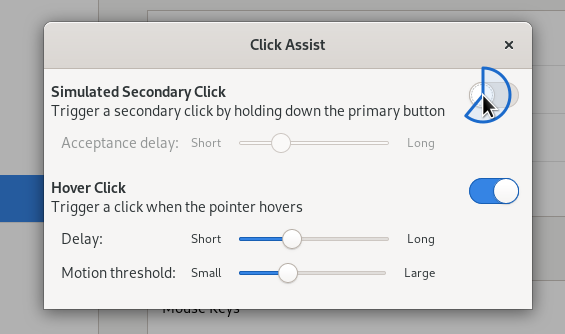The last GNOME release, named “Thessaloniki”, was busy for GNOME Shell and Mutter. Many changes, ranging from code cleanups to architectural changes to performance improvements to new features landed.
Let’s take a look at the major highlights for the GNOME 3.34 release.
GNOME Shell
JavaScript Updates
GNOME Shell uses GJS, the GNOME JavaScript engine, to run. With the latest updates to GJS, such as the JS60 migration, GNOME Shell saw important updates making the codebase use modern tools and code practices.
Implicit Animations
One of the most important improvements that were part of GNOME Shell 3.34 was the transition to Clutter implicit animations. So far, GNOME Shell has been using the Tweener framework, which is written completely in JavaScript and, as a consequence, required extra work to communicate the animations to Clutter.
Using the implicit animations framework provided by Clutter allows GNOME Shell to skip a lot of JavaScript → C jumps, and thus, take less resources to run animations.
CI Integration
Testing GNOME Shell with CI is slightly tricky due to it and Mutter always being in lockstep. It is common that GNOME Shell from the git master branch needs Mutter from git master as well. Finding a good way to handle that prevented CI from landing earlier, but during this cycle we crafted custom container images and wrote the necessary scripts to allow for that.
Now, when running CI, GNOME Shell is tested with Mutter in tandem. Furthermore, on Mutter side, we’ve added a CI step to build and test GNOME Shell as well, catching many errors that would otherwise take some time to be found.
New Extensions Tool
GNOME Shell 3.34 also ships a new gnome-extensions tool, making it easier to create and manage GNOME Shell extensions. Due to the automation this new tool provides, such as extension templates, bash completion, packing, and testing extensions, it should be a significant improvement for extension authors.
Accessibility
With the ongoing transition to Wayland, GNOME Shell is taking ownership of many features that required random applications have full access to windows and their contents. One area where this bad practice is recurrent is the accessibility stack.
With GNOME Shell 3.34, a big coordinated effort was put in filling the missing accessibility bits when running a Wayland session, such as Locate Pointer, Click Assist, among others.
Folder Management
Last but not least, in GNOME Shell 3.34, it is possible to create, rename, and delete folders using Drag n’ Drop actions.
GNOME Shell 3.34 in Numbers
GNOME Shell 3.34 had 309 files changed, with 50,022 lines added and 26,924 removed. 59 merge requests were merged, and 1 was closed. 71 issues were closed by commits.
Developers with the most changesets:
| 289 | Florian Müllner | | 84 | Marco Trevisan (Treviño) | | 65 | Jonas Dreßler | | 32 | Georges Basile Stavracas Neto | | 19 | Carlos Garnacho | | 11 | Ray Strode | | 10 | Ryuta Fujii | | 9 | Kukuh Syafaat | | 7 | Cosimo Cecchi | | 7 | Jordi Mas |
Mutter
Sysprof
Sysprof is GNOME’s profiling framework, built on top of the `perf` API. With the GNOME 3.34 release, Mutter now integrates with Sysprof and is able to profile a lot of its internals.
Profiling Mutter is an important requirement to detect potential bottlenecks in the algorithms and the codebase, and have a proper understanding of how, where, and why things are the way they are.
GPU Hotplug
Mutter is now able to detect and use GPUs, usually external, that are plugged while the GNOME session is running.
KMS Transactions
In order for Mutter to support more complex hardware capabilities it needs to know how to utilize the atomic KMS kernel API. A first step in this direction was taken this cycle by implementing an internal transactional KMS API. Right now this API is backed by a non-atomic implementation, in order to make sure that we don’t break anywhere we currently fully function on, but in the future having this API will enable us to have mutter utilize more advanced hardware capabilities such as overlay planes and framebuffer modifiers. It is also a big step closer to being able to isolate KMS interaction into a dedicated thread eventually enabling low latency input device feedback once we move input processing into its own dedicated thread as well.
Improved Frame Scheduler
The algorithm that Mutter uses to schedule when to update the contents of the
monitor was fine-tuned and is now able to deliver new frames more smoothly. The new algorithm gives applications more time to draw their contents and notify Mutter about it. As a consequence, Mutter is much more likely to update frames in time for the monitor to display.
NVIDIA on Xorg frame throttling changes
Further in the past, Mutter used glxSwapBuffers() to throttle frame drawing when using the proprietary NVIDIA driver. This caused issues, as it’d block the main thread for long period of times if there was constantly new frames being scheduled. To mitigate this, Mutter developers introduced functionality imitating the GLX_INTEL_swap_event extension used by the Intel driver to make it possible for swapping buffers asynchronously, by receiving a “completion event” (swap event) later on.
This was done using NVIDIA specific GLX extensions combined with running a separate thread, where the “swap event” was generated, in contrast to when using GLX_INTEL_swap_event, where the Intel driver itself did this.
In practice, this caused issues, as it the relevant GLX extension implementation in the NVIDIA driver tended to be CPU heavy. However, due to the changes this cycle to our frame scheduling algorithm, the initial problem is now mitigated by scheduling frames in a way that we will we avoid blocking on glxSwapBuffers() for as long, meaning we could remove the CPU heavy “swap event” imitation code. This should mean less CPU usage when using the NVIDIA driver and displaying an application that continuously renders frames.
Graphene
Graphene is a library implementing complicated math functionality related to vertices, matrices, rectangles and other types usually related to 3D programming. In order to decrease maintenance burden on Mutter, which had its own set of complicated math functionality doing practically the same thing, we went and replaced most of that code, and switched to using Graphene directly. Not only did we decrease the amount of code we have to maintain, we also got all the fancy new improvements done to Graphene that we would otherwise be without!
For GNOME 3.34, all but matrices were converted to the corresponding Graphene types. That’s because Cogl and Graphene matrices have different semantics and, thus, will require more scrutiny.
XWayland on Demand
Mutter and GNOME Shell 3.34 earned the ability to run as a pure Wayland compositor, while still providing seamless compatibility with X11 by starting XWayland when required by applications. This is the culmination of much prior effort at refactoring internals and ironing out indirect X11 dependencies throughout Mutter and GNOME Shell specifically, and the GNOME session generally.
Being able to start Xwayland and other related X11 services on demand for legacy applications came out organically, and demonstrates we are no longer tied by our legacy support.
This feature is disabled by default, and can be enabled by adding ‘autostart-xwayland’ to `org.gnome.mutter experimental-features`.
Real-Time Scheduler
When running as a Wayland compositor and display server, it is important that Mutter keeps its reponsiveness all the time. However, Mutter runs as a regular user application, and is subject to starvation in various scenarios, such as intensive I/O.
Mutter 3.34 now requests real-time priority, which gives it more priority than
regular applications. This avoids stalls and stutterings when running GNOME Shell as a Wayland compositor.
This feature is disabled by default, and can be enabled by adding ‘rt-scheduler’
to `org.gnome.mutter experimental-features`.
MetaShapedTexture as a ClutterContent
MetaShapedTexture represents the visual contents of an application’s surface. It takes care of making sure the content is cropped and scaled properly, and tries to optimize drawing depending on what is opaque, and what is not.
ClutterContent, on the other hand, is Clutter’s way of defining deferred rendering instructions, also known as render nodes. This enables more efficient batching of draw calls, compared to the implicit batching implemented by the Cogl journal. This cycle we took the MetaShapedTexture, which was a ClutterActor subclass manually issuing Cogl drawing instructions, and turned into a set of fully deferred rendering instructions as defined by ClutterContent.
This not only improved batching of draw calls but greatly decreased the size of the Clutter actor tree, giving us a significant performance boost.
Here’s a quick comparison:

Mutter 3.34 in Numbers
Mutter 3.34 had 766 files changed, with 34,249 lines added and 37,268 removed. 74 issues were closed by commits.
| 122 | Jonas Ådahl | | 109 | Carlos Garnacho | | 82 | Marco Trevisan (Treviño) | | 52 | Olivier Fourdan | | 48 | Georges Basile Stavracas Neto | | 40 | Florian Müllner | | 30 | Adam Jackson | | 27 | Daniel van Vugt | | 24 | Hans de Goede | | 24 | Robert Mader | | 19 | Jonas Dreßler | | 16 | Niels De Graef | | 16 | Pekka Paalanen |


